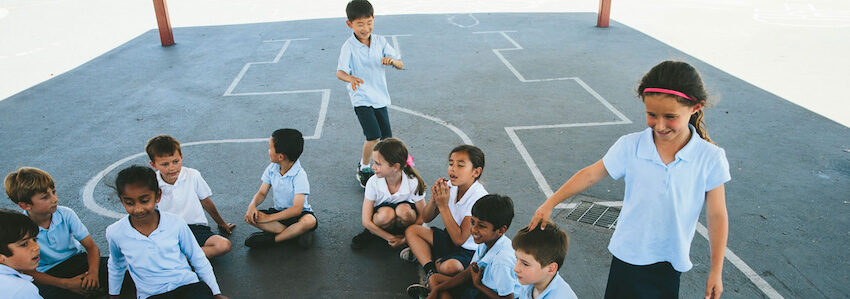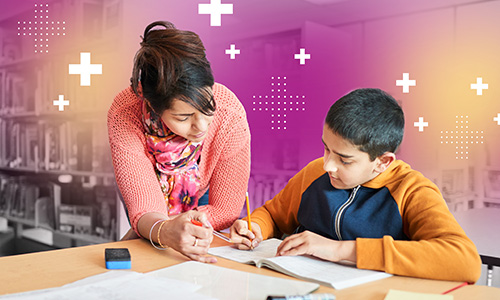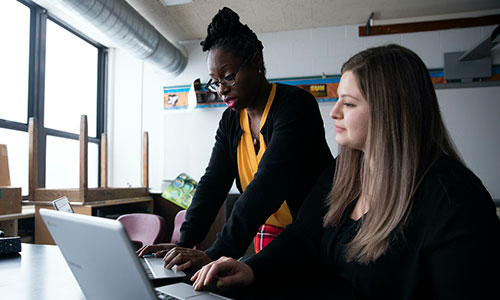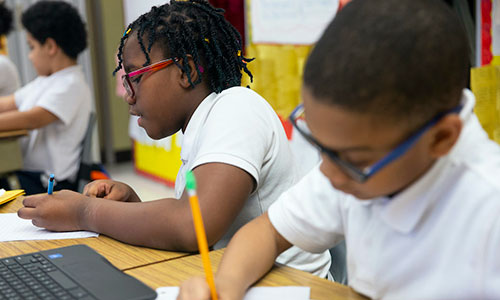
If you’re a teacher who’s looking for new ways to keep your students focused and on task, there’s one technique (a bit unorthodox, perhaps, but guaranteed to get their attention) you might want to try: inviting them to a friendly game of soccer! At least, that’s what’s worked for former sixth-grade teacher, current NWEA instructional coaching coordinator, and recent guest on The Continuing Educator podcast, Lindsay Deacon.
As an experienced soccer player and coach, Lindsay relished the opportunity to join her students on the pitch, where they could take part in some healthy competition together and blow off a little steam. Lindsay found that after some great exercise, friendly rivalry, and the chance to see their teacher in a different light, her students would return to the classroom refreshed and ready to re-engage with their work.
Along with first-grade teacher Amanda Kamm, Lindsay shared her experience on “Fuzzy feelings and wardrobe malfunctions,” a recent episode of our podcast. Co-hosts Jacob Bruno, executive vice president of Learning & Improvement Services at NWEA, and middle school math teacher Kailey Rhodes chimed in with their own ideas about inclusion and focus as integral parts of the learning process. The four educators had a lively discussion about ways to make learning fun, help kids engage, and generate the “fuzzy feelings” that teachers love.
Inclusion: It’s the little things
Kailey observed that as kids grow up, they develop a keener sense of justice about how they want themselves and their peers to be treated—but at the same time, they’re still kids, they’re still sensitive, and they still crave approval. Kailey sees this stage (middle school specifically) as an opportunity to foster a more nuanced understanding of what inclusion means and how it looks in action. And that includes taking a more nuanced look at bullying.
Bullying is more subtle than how it’s depicted in public service announcements, Kailey says. “It can be something as low-key as not making eye contact with one student when you’re talking in a group. That’s why talking about inclusion is so important. Bullying can be a lowercase ‘b.’”
For Amanda, inclusion in the classroom often means simply knowing each other. “We talk about how a lot of our problems start with miscommunications and misunderstandings because we don’t know each other and our different ways of being,” she says. “One student might like to play fast and hard, while another plays quietly and carefully. When we don’t understand those differences, we tend to feel conflict.”
Jacob recalled his time teaching at a large, inner-city high school where many of the kids didn’t know each other’s names. “I had one rule: respect,” he says. “Know each other’s names and build community. We did ‘Onions and Roses,’ where kids could share what made them sad or happy. They didn’t have to share, but we made time for it so they could hear about each other’s lives, and I modeled that. It [wasn’t] a panacea or perfect solution, but it really made a difference in terms of kids looking out for each other.”
Tips for boosting focus and engagement
When the conversation turned to how to help students focus and engage with their work, Jacob joked that The Continuing Educator was starting to sound like an ad for 3M. That’s because all four educators reported leaning heavily on Post-Its as an essential classroom tool in a variety of ways.
For Kailey, Post-Its are invaluable for facilitating dialogue with students about their performance on tests or assignments. “I’ll give kids a pink, a blue, and a lime green and use them on completed tests to ask them: What are you really proud of? What do you wish you’d studied more? What do you have more questions about?”
Lindsay, too, used Post-Its to communicate with students—and even to task them with special responsibilities when she knew a substitute teacher would be filling in for her. “The night before, I would think about all the kids who could help manage things. I would write on the notes, ‘Hey, Darcy, thanks for being a great student. Can you be in charge of the mailboxes tomorrow?’ The sub’s notes would show that this worked. Delegating is good.”
Other ideas the group shared for promoting greater focus include:
- Healthy ways to fidget and meet sensory needs. Bring Play-Doh, Velcro, and other tactile objects into the learning environment to give busy hands something to do while busy minds are learning.
- Mixing up the routine. Instead of having kids do the same thing every day, assemble teams with different roles and purposes to do something engaging. “Kids need to be engaged in novel experiences that they understand are pushing them forward,” Jacob explains.
- Manipulatives. Whether it’s place value tents or play money, try using various fun, physical tools to keep students engaged and actively learning.
Fuzzy (and funny) feelings
In addition to sharing some philosophies and strategies for bringing more engagement, inclusion, and focus to the classroom, the group also reflected on a handful of feel-good moments—the kind that tend to stick with you. For example:
- A student once told Lindsay she was “the most organized teacher” they ever knew, while another student praised her for being a “great storyteller.”
- Amanda fondly remembers the student who gave her a note that said, “I love you. You make everyone feel included,” complete with a drawing of stick figures hugging each other.
- Kailey has enjoyed casually blowing her students’ minds by sharing some well-chosen personal details about her life. “I’ll tell my kids I went to a movie,” she says, “and they’ll be shocked. ‘You go to movies?!’”
And that wardrobe malfunction mentioned in the title of the podcast episode? That’s from an unforgettable anecdote shared by Lindsay, who showed up to her eighth-grade classroom during her first year of teaching in a nice new pair of jeans, only to have them split along the seam when she kneeled down. Luckily, she had a backup pair of pants in her gym bag, and she performed a quick wardrobe change when the students were busy with a task.
Embarrassing, perhaps, but also funny—and humanizing. “When you’re a new teacher,” Lindsay says, “everything matters so much more.”
Hear more on The Continuing Educator
Want to hear the whole conversation? Listen to the podcast episode, and see what kinds of ideas it sparks about how to bring more inclusion, focus—and, yes, fuzzy feelings—to your classroom.







